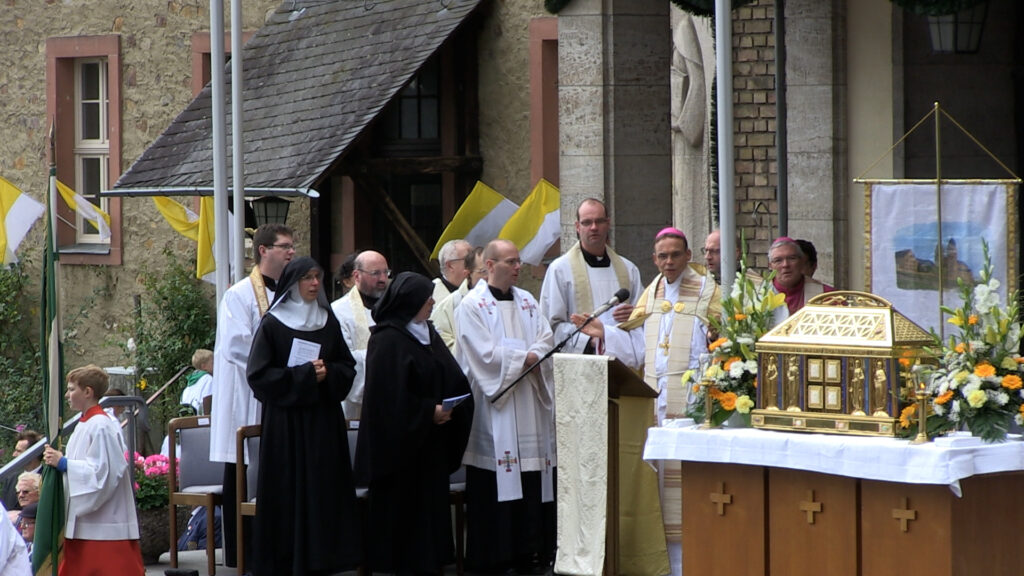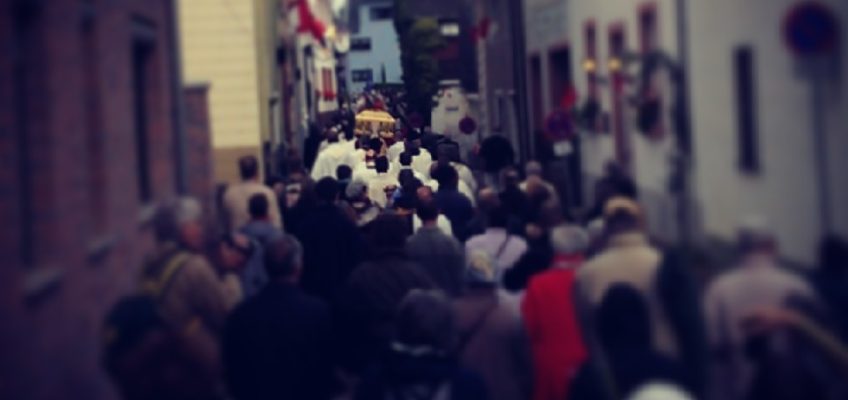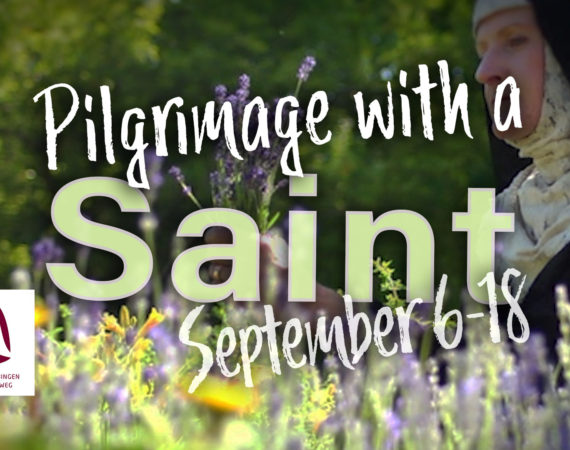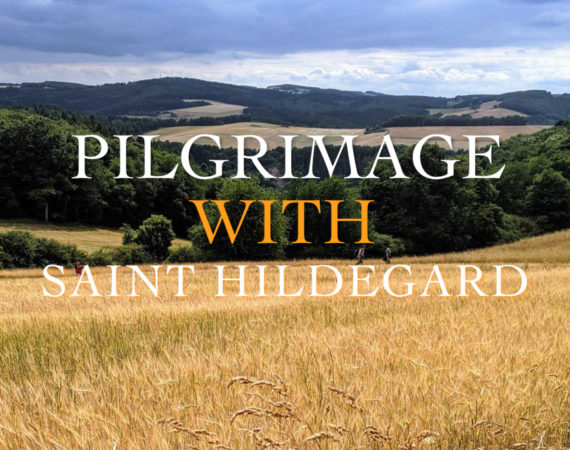Journal Entry from Hildegard Feast Day

Feast Day for Hildegard von Bingen
On September 17th, I am in Germany to attend the Feast day for Hildegard von Bingen. This experience profoundly altered my perception of Saint Hildegard’s significance to German Catholics. Prior to this event, I had only known her as a historical figure, a medieval mystic, and a celebrated composer, but witnessing the devotion of the people during the procession breathed new life into her legacy.
Walking behind her figurative presence through the bustling streets, with her golden relic leading the way, was an experience that resonated with a deep sense of honor. It was as though I was walking in the footsteps of history, joining a centuries-old tradition that had endured through the ages. The relic, gleaming in the sunlight, served as a tangible link to Saint Hildegard’s spiritual influence and enduring impact on the faithful.
Yet, what struck me most was the communal aspect of the event. As I moved alongside the crowd, I felt a profound sense of unity and shared purpose. It was no longer just about filming or documenting; I became a participant in a collective expression of faith and reverence. In those moments, I was reminded that Saint Hildegard’s legacy was not merely confined to the pages of history or the confines of a church. Her spirit was alive and vibrant in the hearts of those who had gathered, and I felt privileged to be a part of that sacred moment.
Saint Hildegard’s influence, as witnessed in that procession, was a reminder of the enduring power of faith and the ability of religious figures to inspire and unite generations of believers. It was a testament to the unbroken thread of devotion that binds the past, present, and future of German Catholics and, indeed, all those who find inspiration in the lives of saints.

Here is a woman that people still worship more than 834 years later, and she is still felt like a living force. It is interesting how the Catholic tradition creates its ritual around a feast day, and I can see how the Middle Ages it still is. The people get spoken to by the priests and the head abbot, they make their offering, and then they get to walk with the relic through the village of Rüdesheim am Rhein, Germany which is like a blessing at every door. The abbey had refreshments which consist of wine from the vineyards. White and yellow flags flew proudly for the Vatican Church as this was the first official feast day since she was canonized. It is a tradition worth more examination but one that I am proud to have witnessed.
Michael M. Conti’s Journal Entry from September 18, 2013
What is a Catholic feast day?
A Catholic feast day, also known as a liturgical feast or holy day, is a day on the liturgical calendar of the Roman Catholic Church that commemorates and celebrates a particular event or person of religious significance. These feast days are an essential part of Catholic worship and spirituality and are observed with special prayers, Masses, and sometimes specific customs or traditions.
There are several types of Catholic feast days, including:
Solemnities: These are the highest-ranking feast days in the liturgical calendar and often commemorate significant events in the life of Jesus Christ, the Blessed Virgin Mary, or important saints. Examples include Christmas (the birth of Jesus), Easter (the resurrection of Jesus), and the Feast of the Assumption (the bodily assumption of Mary into heaven).
Feasts: These are significant but not as high-ranking as solemnities. Feasts commemorate important events or saints in the Catholic tradition. Examples include the Feast of the Immaculate Conception (Mary’s conception without original sin) and the Feast of St. Francis of Assisi.
Memorials: Memorials are lesser feast days that honor individual saints, martyrs, or other figures in the Catholic tradition. Some memorials are obligatory, while others are optional. Examples include the Memorial of St. Anthony of Padua and the Memorial of St. Teresa of Ávila.
Optional Memorials: These are feasts or memorials that are celebrated at the discretion of individual priests or parishes, and they may or may not be observed on a given day.
Seasonal Feast Days: Some feast days are tied to specific liturgical seasons, such as Advent, Christmas, Lent, and Easter.
The liturgical calendar is structured in a way that ensures that important events in the life of Christ and the Church, as well as the lives of saints and martyrs, are remembered and celebrated throughout the year. The specific feast days and their significance can vary among different Catholic rites and regions, but they play a vital role in the worship and spiritual life of Catholics worldwide.



